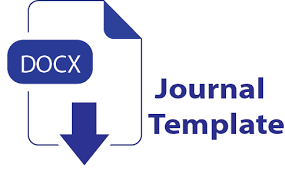PENERAPAN LATIHAN DEKODING PERSEPSI AUDITORI UNTUK MENSTIMULASI RESPON TERHADAP BUNYI PADA KLIEN DISAUDIA BILATERAL PROFOUND
Application of Auditory Perception Decoding Exercises to Stimulate Responses to Sound in Bilateral Profound Dysaudia Clients
DOI:
https://doi.org/10.38215/jtkes.v4i1.65Keywords:
auditory, bilateral profound, decodingAbstract
The communication process will occur if there are at least two people exchanging information through the codes conveyed by the speaker and also the codes understood by the listener. Meanwhile, dysaudia is a speech impediment that is directly related to hearing impairment resulted in the inability of the sufferer to communicate well verbally. This study aims to determine the implementation and success rate of auditory perception decoding exercises to improve response to sound on a Bilateral Profound Disaudia client. This research used a single-subject experiment. Data were collected through techniques of interview to the client's parents, direct observation of the client, and study of the client's medical record document. The collected data were then analyzed to draw conclusions. Results of the study showed that after 20 meetings of therapy using the Decoding Exercise method, the ability of the client response toward sound increased from 0 in the initial test to 3 in the final test with a success percentage of 37.5%. Based on the results, it can be concluded that the application of decoding exercises to improve the response to sound on the profound bilateral dysaudia client is quite successful.
Downloads
References
American Speech-Language-Hearing Association. (2011). Speech-Language Pathology Medical Review Guidelines. American Speech Language Hearing Association: Rockville
Depertemen Kesehatan RI. (2009). Promosi Kesehatan. Dipetik Juni 2019, 10, dari https://s3.amazonaws.com/academia.edu.documents/38193352/ ringka- santeskompetensibidangkementrienkesehatan 3. Pdf.
Estabrooks, W. (1994). Auditory Verbal Therapy for Parents and Professionals. Washington: Alexander Graham Bell Association for the Deaf.
Kadek, S. Darmadi. (2007). Gejala Rubela Bawaan (Kongenital) Berdasarkan Pemeriksaan Serologis dan RNA Virus. Indonesian Journal of Clinical Pathology and Medical Laboratory. 13(2); 63-71. Dipetik Juni 2019, 10, dari https://www.researchgate.net/publication/328279583_GEJALA_RUBELA_BAWAAN_KONGENITAL_BERDASARKAN_PEMERIKSAAN_SEROLOGIS_DAN_RNA_VIRUS/link/5bf1a592a6fdcc3a8ddfe244/downlo ad.
Legawati. (2018). Asuhan Persalinan dan Bayi Baru Lahir. Malang: Wineka Media.
Madyawati, Lilis. (2017). Strategi Pengembangan Bahasa pada Anak. Jakarta: Kharisma Putra Utama.
Paul, V.Peter., Whitelaw, Gail M. Hearing and Deafness: An Introduction for Health and Education Professionals. Massachusetts: Jones and Bartlett Publishers
Pranindyo, Ki. (2000). Metoda-metoda Terapi Bidang Artikulasi. Jakarta: Akademi Terapi Wicara (ATW).
Rini, Hapsari Puspa. (2014). Peningkatan Keterampilan Sosial Anak Tunarungu kelas VI SDLB Melalui Permainan Tradisional Pasaran di SLB-B Wiyata Dharma I Tempel. Fakultas Ilmu Pendidikan. Universitas Negeri Yogyakarta. Dipetik Mei 2019, 26, dari http://journal.student.uny.ac.id/ ojs/ojs/index.php/plb/article/download/6252/6004.
Rundjan, Lily., Amir, Idham., Suwento, Ronny., & Mangunatmaja, Irawan. (2005). Skrining Gangguan Pendengaran pada Neonatus Risiko Tinggi. Sari Pediatri. 6(4); 149-154. Dipetik Juni 2019, 10, dari https://saripediatri.org /index.php/sari-pediatri/article/download/871/805.
Satari, Hindra I., dan Meilisari, Mila. (2008). Demam Berdarah: Perawatan di Rumah & di Rumah Sakit. Jakarta: Puspa Swara.
Setyono, Bambang. (2000). Terapi Wicara. Jakarta: EGC.
Somantri, Sutjihati. (2005). Psikologi Anak Luar Biasa. Bandung: Refika Aditama.
Soepardi, A. Efianty., dan Iskandar, Nurbaeti. (2001). Telinga Hidung Tenggorok Leher. Jakarta: FKUI.
Soepardi, A. Efianty., dan Iskandar, Nurbaeti. (2012). Buku Ajar Ilmu Kesehatan Telinga Hidung Tenggorok Kepala & Leher. Jakarta: FKUI.
Stach, Brad A. (2003). Comprehensive Dictionary of Audiology: Illustrated (2nd ed). Canada: Delmar Learning.
Van Riper, Charles., and Erickson, Robert L. (1984). Speech Correction: An Introduction to Speech Pathology and Audiology. Needham Heights: Simon & Schuster.
Weiss, Curtis E., Gordon, Mary E., & Lillywhite, Herold S. (1987). Clinical Management of Articulatory and Phonologic Disorders. London: Williams & Wilkins.
Winarsih, Murni. (2007). Intervensi Dini bagi Anak Tunarungu dalam Pemerolehan Bahasa. Jakarta: Depdiknas RI.
Wu, Cheng Ju Dora & Brown, P. Margaret. (nd). Parents’ and Teacher’s Expectations of Auditory Verbal Therapy. The Volta Review. 104(1); 5-20
Downloads
Published
Issue
Section
License
Copyright (c) 2021 Jurnal Teras Kesehatan

This work is licensed under a Creative Commons Attribution-ShareAlike 4.0 International License.
Authors who publish articles in Jurnal Teras Kesehatan agree to the following terms:
- Authors retain copyright of the article and grant the journal the right of first publication with the work simultaneously licensed under a CC-BY-SA or the Creative Commons Attribution–ShareAlike License.
- Authors can enter into separate, additional contractual arrangements for the non-exclusive distribution of the journal's published version of the work (e.g., post it to an institutional repository or publish it in a book), with an acknowledgment of its initial publication in this journal.
Authors are permitted and encouraged to post their work online (e.g., in institutional repositories or on their website) prior to and during the submission process, as it can lead to productive exchanges, as well as earlier and greater citation of published work (See The Effect of Open Access)











